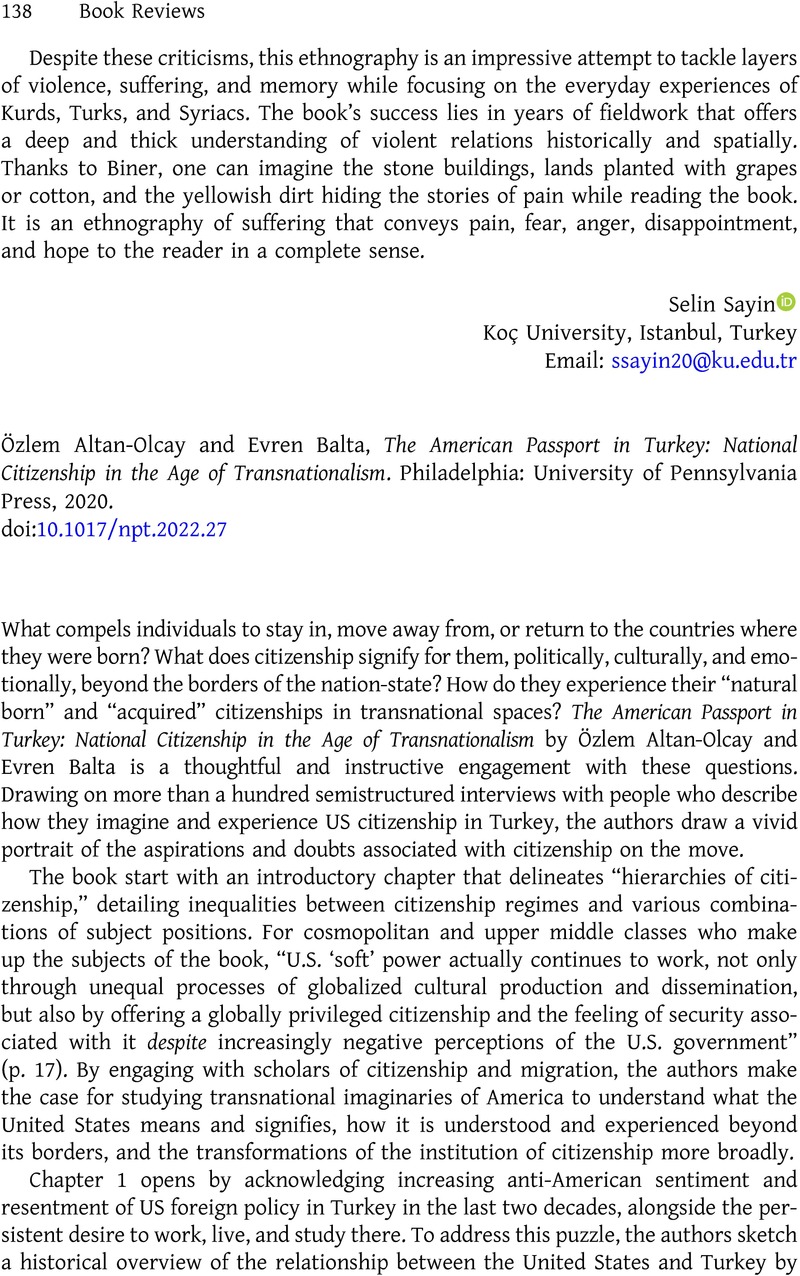No CrossRef data available.
Article contents
Özlem Altan-Olcay and Evren Balta, The American Passport in Turkey: National Citizenship in the Age of Transnationalism. Philadelphia: University of Pennsylvania Press, 2020.
Review products
Published online by Cambridge University Press: 20 February 2023
Abstract

- Type
- Book Review
- Information
- Copyright
- © The Author(s), 2023. Published by Cambridge University Press



